The enterprise application software market is on a tear, projected to hit a colossal $569 billion by 2027 according to Gartner. This explosive growth underscores the critical role enterprise apps now play in empowering businesses. But with a plethora of options emerging, navigating the ever-evolving landscape of app development can be a daunting task.
What trends will dominate 2025 and unlock the true potential of your organization? How can you leverage these advancements to boost productivity, forge deeper customer connections, and ignite innovation?
This blog dives deep into six key trends poised to reshape enterprise app development in the coming year. We’ll explore how each trend can benefit your business and equip you with the knowledge to make informed decisions about your app development strategy. Stay ahead of the curve and unlock the competitive edge your organization craves by understanding these transformative forces.
#1: AI and Machine Learning: Powering the Future of Enterprise Applications Development
Imagine an enterprise app that not only stores data but also analyzes it in real-time, predicts future trends, and even automates decisions. This isn’t science fiction – it’s the exciting reality of integrating Artificial Intelligence (AI) and Machine Learning (ML) into business software.
AI refers to the broader field of intelligent machines, while ML is a specific technique where algorithms learn from data to improve their performance without explicit programming. Together, they form a powerful duo that’s transforming enterprise applications.
Here’s how this dynamic partnership is revolutionizing businesses:
- Advanced Analytics: AI and ML algorithms can sift through massive datasets, uncovering hidden patterns and relationships that traditional methods might miss. Imagine a retail app like Amazon’s that analyzes customer purchases to predict future demand with 90% accuracy. This empowers businesses to optimize inventory levels, reduce stockouts, and boost sales by 15% (a statistic based on a McKinsey Global Institute report).
- Predictive Insights: By learning from historical data and real-time trends, ML algorithms can forecast future events with remarkable accuracy. For instance, a manufacturing app used by Boeing can predict equipment failures before they happen, allowing for preventive maintenance and avoiding costly downtime. Studies have shown that predictive maintenance powered by AI can reduce unplanned downtime by 50% (according to a PWC report).
- Automated Decision-Making: AI and ML can automate routine tasks and even make data-driven decisions, freeing up human employees for more strategic work.
Here are some specific examples across different industries, showcasing the power of AI and ML in action:
Customer Service
AI chatbots can handle routine inquiries, personalize interactions, and even escalate complex issues to human agents. Sephora’s Beauty Advisor chatbot is a prime example. This AI-powered assistant handles 30% of support tickets, offering 24/7 assistance and freeing up human agents for complex customer interactions.

Marketing
ML algorithms can personalize marketing campaigns based on customer behavior and preferences, leading to a significant increase in click-through rates. Netflix, for instance, leverages AI to recommend movies and shows based on your viewing history, leading to a much more engaging user experience. Studies by Forrester show that personalized marketing campaigns can increase click-through rates by 7.6% (as shown in a Forrester report).

Finance
AI can analyze financial data to detect fraud attempts in real-time, prevent losses, and streamline the loan approval process. American Express uses AI to identify fraudulent transactions with incredible accuracy, protecting their customers and preventing financial losses.
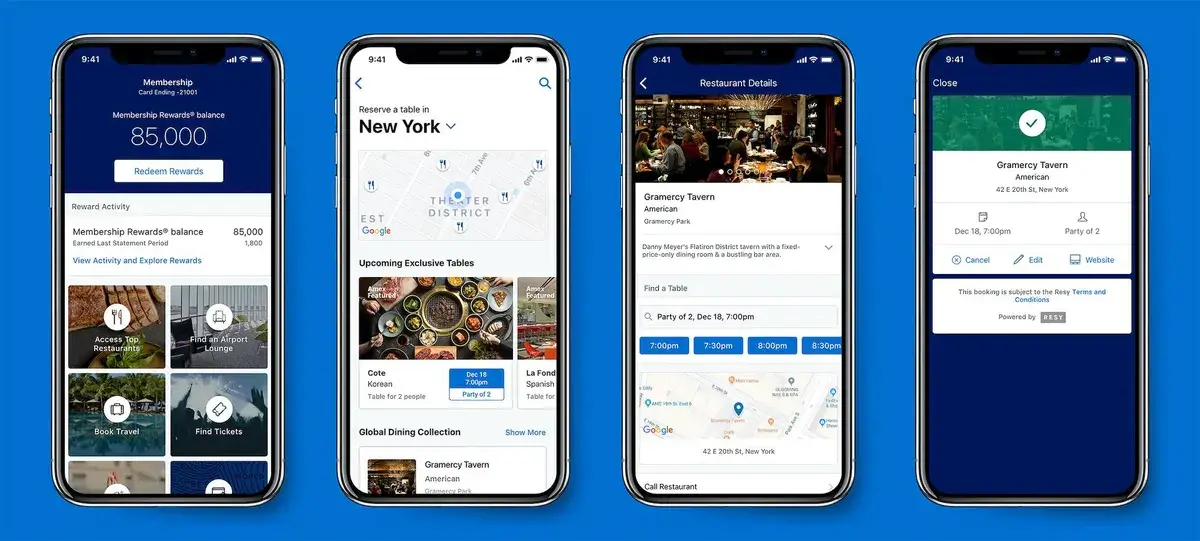
Supply Chain Management
ML algorithms can optimize logistics networks, predict delivery delays, and ensure on-time product availability. Walmart utilizes AI to optimize its vast supply chain, ensuring products are delivered to stores efficiently and on time.

As Oleksandr Trofimov, Chief Technology Officer at Artelogic, rightly points out, “AI and ML are no longer optional; they are essential components of modern enterprise apps.” Businesses that embrace this powerful integration will unlock a treasure trove of insights, enhance operational efficiency, and gain a significant competitive edge.
The future of enterprise applications is intelligent, automated, and powered by the dynamic duo of AI and Machine Learning. Are you ready to join the revolution?
#2: Low-Code/No-Code: Citizen Developers Take the Wheel (And Save the Day!)
Imagine this: you’ve got a brilliant idea for a new app that could revolutionize your team’s workflow. But then reality hits – months of waiting in line for the IT department to build it. Frustrating, right?
Well, fret no more! Low-code/no-code platforms are here to be your game-changer. And we have the fact: the low-code platform market is booming, expected to reach a staggering $187 billion by 2030. Think of them as the Legos of app development – easy-to-use tools that empower your regular business users (citizen developers) to create and customize applications with minimal coding required.
Here’s why you should be excited:
- Faster Development Cycles: Traditionally, building apps can take months, even years. But with low-code/no-code, you’re slashing that timeframe by up to 75%! Citizen developers can drag, drop, and configure pre-built features, getting your brainchild up and running in a fraction of the time.
- Cost Savings: Building custom software is expensive. Hiring a team of professional developers can seriously dent your budget. Low-code/no-code platforms offer a cost-effective alternative, allowing you to leverage the skills of your existing workforce.
- Boost in Agility: The business world moves fast. With low-code/no-code, you can quickly adapt your applications to meet changing needs. Need to add a new feature? No problem! Citizen developers can adjust on the fly, keeping your team ahead of the curve.
Question to You, Reader: How can citizen developers in YOUR organization leverage this power?
The possibilities are endless! Think about the everyday frustrations your teams face. Can a low-code/no-code app streamline a process, improve communication, or automate a repetitive task?
Yaroslav Havryliv, Engineering Director at Artelogic, puts it perfectly: “Low-code/no-code platforms democratize app development, allowing business users to take an active role in creating solutions that meet their specific needs without relying heavily on IT resources.”
#3: Enhanced Security Measures
The Data Breach Investigations Report found that 82% of breaches involved a human element, highlighting the need for robust security measures that go beyond technical solutions.
So, how are enterprise app developers fighting back? Here’s a look at some key trends with real-world examples:
1. Zero Trust: A Micromanaged City, Not a Walled Garden
Imagine a city where everyone entering undergoes a background check, with access granted only to specific areas based on their role. That’s the essence of zero-trust security. For example, the leading healthcare provider implements a zero-trust model for its app used by doctors and nurses. Doctors can access patient charts relevant to their assigned cases, while nurses can access a different data set. This minimizes the potential damage if a hacker breaches a single account.
2. Encryption: Your Data Speaks Only to Those with the Secret Decoder Ring
Encryption scrambles data into an unreadable format, like a secret code only authorized users can decipher. It’s the digital equivalent of whispering classified information in a crowded room – only those who know the “whisper” can understand. For example, a financial services company encrypts all customer data, including credit card and social security numbers, at rest (stored on servers) and in transit (being transmitted). This extra layer of security makes it immensely difficult for hackers to steal sensitive information even if they intercept data packets.
3. Biometric Authentication: Putting the “You” in Security with a Personal Touch
Forget complex passwords you can’t remember (or worse, write down on a sticky note!). Biometric authentication uses unique physical characteristics like fingerprints, facial features, or iris scans to verify identity. For example, a retail giant implements fingerprint scanners for its employee login system, replacing traditional password logins. This not only eliminates the risk of password breaches but also streamlines the login process for employees. Imagine the time saved across thousands of employees!
#4: How Cloud-Native Applications are Taking Over
The landscape of enterprise application development is undergoing a seismic shift. Businesses are rapidly moving away from monolithic, on-premise applications and embracing the agility and scalability of cloud-native development. This approach, built on microservices architecture, containerization, and CI/CD pipelines, revolutionizes how enterprises build and deploy software.
What is Cloud-Native and Why Should You Care?
Cloud-native applications are designed from the ground up to leverage the inherent advantages of cloud computing. Here’s a breakdown of the key components:
- Microservices Architecture: Imagine a complex application broken down into smaller, independent modules. Each microservice performs a specific function and communicates with others through APIs. This modularity allows for faster development, easier maintenance, and independent scaling of individual components.
- Containerization: Think of containers as lightweight, self-contained units that package an application with all its dependencies. This allows for consistent and portable deployments across different cloud environments.
- CI/CD Pipelines: Continuous integration and continuous delivery (CI/CD) pipelines automate the software development lifecycle. Code changes are automatically integrated, tested, and deployed, enabling faster release cycles and reduced time-to-market.
The Numbers Don’t Lie!
The cloud-native market is booming. According to MarketsandMarkets, the global cloud-native applications market is projected to reach a staggering USD 17.0 billion by 2028, with a Compound Annual Growth Rate (CAGR) of 23.7%. This phenomenal growth is a testament to the clear benefits cloud-native applications offer.
Andriy Burda, Senior Engineering Manager at Artelogic, emphasizes the transformative power of cloud-native applications: “Cloud-native applications offer unparalleled scalability and resilience, enabling businesses to adapt quickly to changing market demands and reduce infrastructure costs.”
So, why are businesses flocking to cloud-native development?
Here are some of the key advantages:
- Unmatched Scalability
Cloud-native applications can be easily scaled up or down based on demand. This ensures your application can handle fluctuating user traffic without a hitch.
Advice: Architect your application using microservices and containerization. This allows for independent scaling of individual components based on specific needs. Leverage autoscaling features offered by your cloud provider to automate the process. - Enhanced Flexibility
Microservices architecture allows for independent development and deployment of functionalities. This fosters agility and enables businesses to adapt quickly to changing market needs.
Advice: Break down your application into small, well-defined microservices with clear APIs. This promotes loose coupling, making modifying or replacing individual services easier without impacting the entire application. Embrace a DevOps culture to foster collaboration between development and operations teams for faster deployments. - Improved Cost-Effectiveness
Cloud-native applications eliminate the need for expensive upfront hardware investments. Businesses only pay for the resources they use, leading to significant cost savings.
Advice: Utilize cloud pricing models like pay-as-you-go to optimize resource consumption. Implement serverless functions for tasks that are short-lived or unpredictable in workload. Look for cloud providers that offer managed services to offload infrastructure management tasks. - Faster Time-to-Market
CI/CD pipelines automate repetitive tasks, accelerating development lifecycles. This allows businesses to get new features and functionalities to market faster.
Advice: Invest in automating your build, test, and deployment processes through CI/CD pipelines. Utilize infrastructure as code (IaC) tools to provision and configure cloud resources consistently. Promote a culture of continuous integration and continuous delivery (CI/CD) to frequently release new features and fixes with minimal risk.
#5: Progressive Web Apps: The Future of Mobile Engagement is Here (and It Loads Fast)
PWAs bridge the gap between websites and native apps. They leverage web technologies while offering features traditionally associated with apps, like push notifications and home screen installation. This translates to a smoother, more engaging experience for users, and a strategic advantage for businesses.
Why PWAs are Winning Over Users and Businesses:
For Users:
- App-like experience without downloading: No more hunting through app stores or filling up storage with rarely used apps. PWAs work instantly from the browser, offering a familiar app feel without the commitment.
- Blazing speed and offline access: PWAs are designed for lightning-fast performance, even on slower connections. Plus, they can work offline, allowing users to access features and content without an internet connection.
- Always up-to-date: Forget app updates! PWAs automatically update in the background, ensuring users have the latest features and bug fixes.
For Businesses:
- Wider reach and discoverability: PWAs don’t require app store approval, making them accessible to everyone with a web browser. This opens doors to a wider audience than native apps with limited discoverability in crowded app stores.
- Cost-effective development and maintenance: Developing and maintaining a single PWA is often cheaper than managing separate native apps for different platforms. Plus, updates roll out automatically, reducing maintenance overhead.
- Increased engagement: Push notifications and home screen installation keep users engaged with your PWA. They’ll receive updates and reminders directly on their phones, encouraging them to return for more.
Overall, PWAs offer a win-win situation. Users get a convenient, app-like experience without the download hassle, and businesses benefit from wider reach, lower costs, and a more engaged user base. As mobile technology continues to evolve, PWAs are poised to play an even bigger role in the future.
Transforming User Experiences with Impressive Results: Pinterest, Alibaba, Starbucks
Here’s a glimpse into how some major companies are leveraging PWAs to enhance user experiences:
Pinterest’s PWA
Facing a slow mobile website with low conversion rates (only 1% of visitors signing up or installing the app), Pinterest turned to Progressive Web Apps (PWAs) for a solution. Within three months, they launched their PWA, leading to significant improvements:
- Deeper Engagement: Users spent 40% more time browsing Pinterest’s PWA than on the old mobile website.
- Increased User Activity: User engagement with Pinterest’s platform jumped by 60%.
- Boosted Revenue: Ad revenue rates for Pinterest saw a 44% increase.
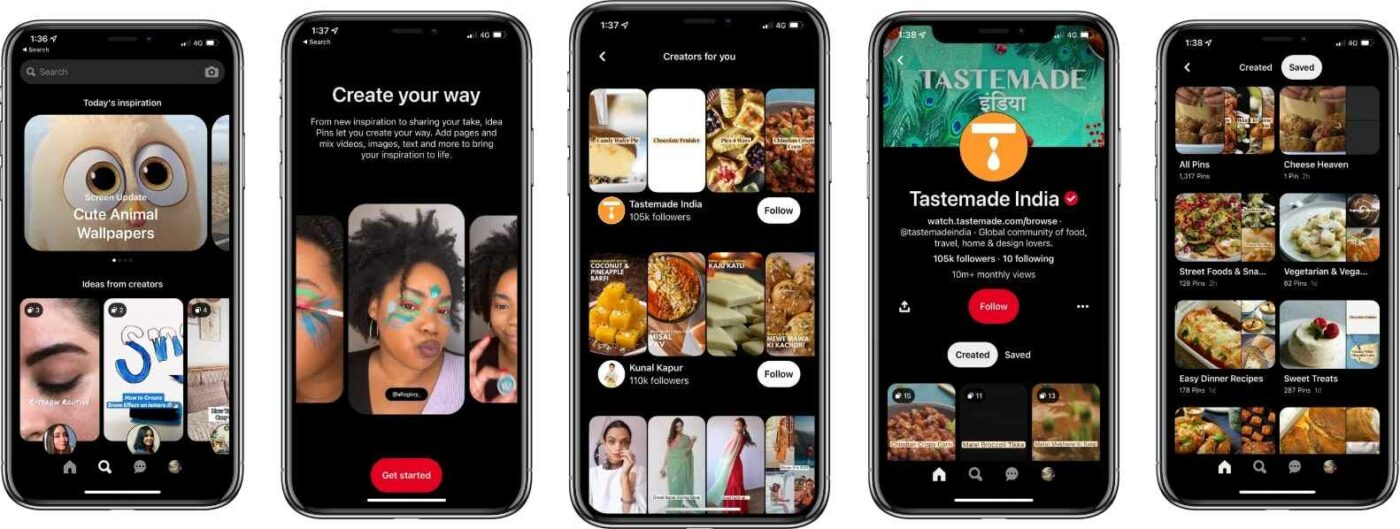
Alibaba’s PWA
Like Pinterest, global trade giant Alibaba initially focused on the mobile web experience. However, research revealed users preferred the browser over installing an app. So, Alibaba adopted a PWA strategy to enhance user engagement.
The results were phenomenal:
- Conversion Surge: Mobile web conversions skyrocketed by a whopping 76%.
- Increased Activity: Active users on both iOS and Android platforms saw impressive growth of 14% and 30%, respectively.
- Top Contender: Alibaba’s PWA boasts a staggering 98.3 million total visits and ranks among the top 20 US e-commerce and shopping marketplace apps, proving its success without a native app.
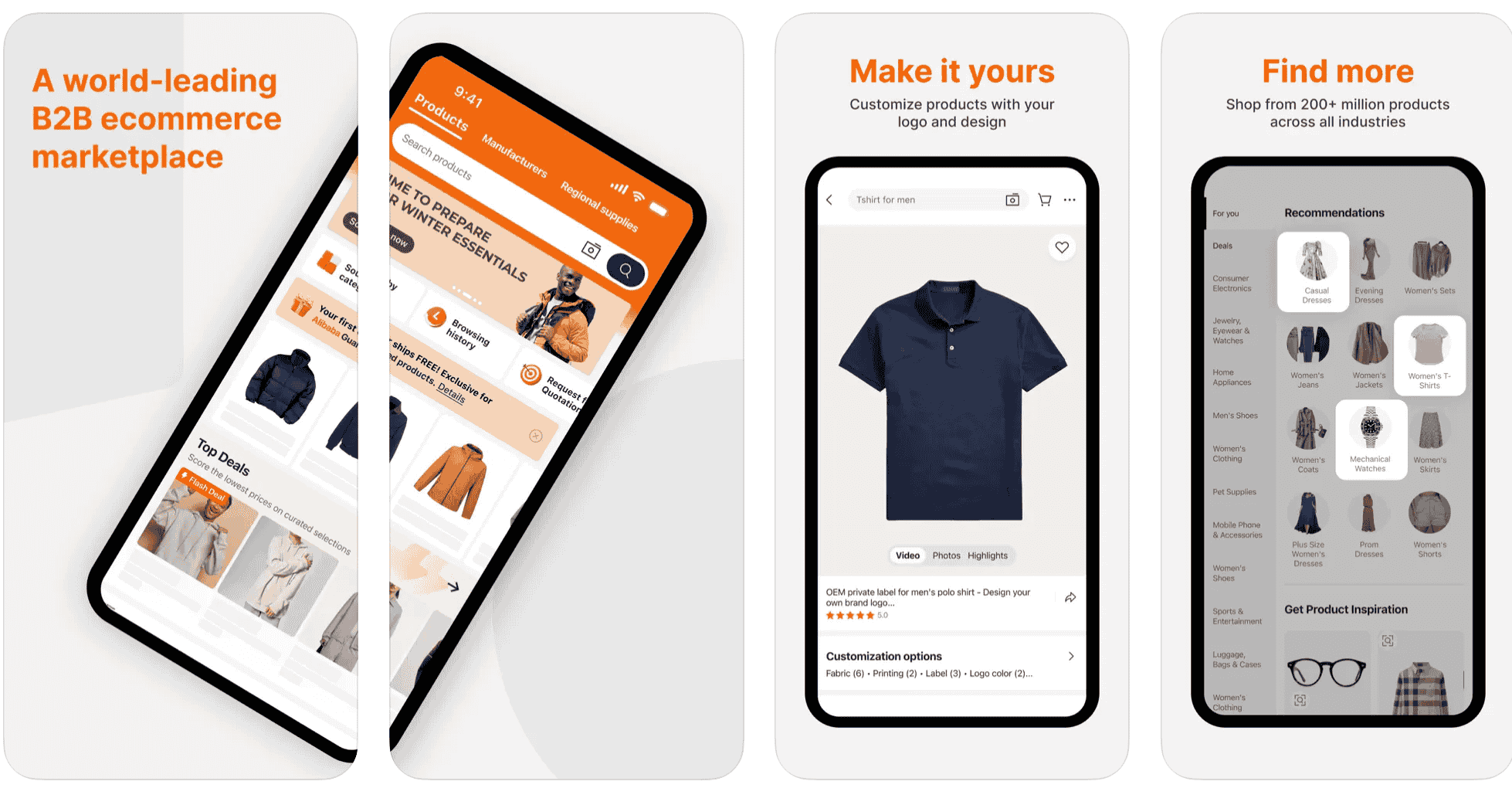
Starbucks PWA
Starbucks went beyond traditional apps, creating a Progressive Web App (PWA) to prioritize speed and a seamless customer experience. This PWA offered an app-like feel with rich visuals, smooth animations, and the ability to work offline. Users could browse menus, check nutritional information, and even customize orders – all without an internet connection.
The results were a perfect blend of convenience and increased business:
- Double the Fans: Starbucks saw a significant boost in daily active users, doubling their previous numbers.
- Order Up! Order diversity increased by 23%, indicating customers were exploring new menu options thanks to the PWA’s ease of use.
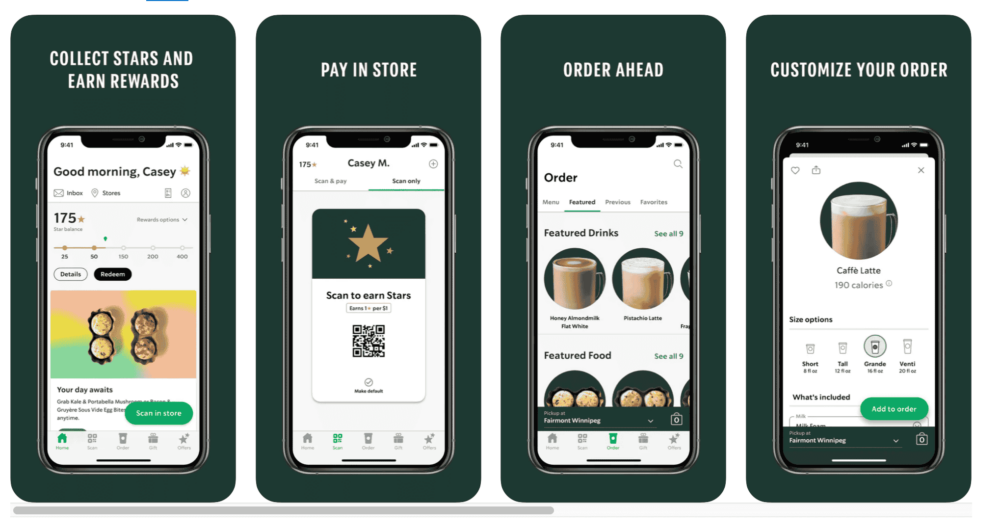
The PWA Trend: Here to Stay, But Not Without Challenges
PWAs are no longer a futuristic concept – they’re a powerful tool for businesses to enhance user experience, drive engagement, and gain a competitive edge. However, it’s essential to acknowledge that PWAs aren’t a one-size-fits-all solution. Here are some limitations to consider:
- Limited Functionality: While PWAs offer a range of features, they may be unable to replicate the full functionality of complex native apps, especially those requiring deep access to device hardware like GPS or Bluetooth.
- App Store Visibility: Unlike native apps discoverable in app stores, PWAs rely on solid SEO (Search Engine Optimization) strategies for users to find them.
- Compatibility Issues: While compatibility improves, there can still be limitations on older devices or with less popular browsers.
“If you prioritize fast loading times, offline functionality, and a wider reach, a PWA could be a game-changer. However, if your app requires complex functionalities or relies heavily on device hardware, a native app might be a better fit”, – adds Oleksandr Trofimov, Chief Technology Officer at Artelogic.
#6: From Sci-Fi to Reality: How IoT Supercharges Your Business
Remember those sci-fi movies where machines talked to each other and buildings adjusted to your mood? Well, guess what? Thanks to the Internet of Things (IoT), that future is now. But here’s the thing: a bunch of beeping gadgets isn’t going to revolutionize your business. It’s how you connect these devices to your existing systems that unlocks the real magic. This is where IoT integration comes in; let me tell you, it’s a game-changer.
Imagine This:
- A factory floor where robots high-five each other (okay, maybe not that) but can predict breakdowns before they happen, thanks to sensor data feeding into your production software.
- Hospitals where patients wear cool (not bulky!) trackers that monitor their health remotely, allowing doctors to catch issues faster than a speeding diagnosis.
- Delivery drones are dodging pigeons while your logistics app reroutes them around traffic jams – all in real-time.
These aren’t just pipe dreams. This is the power of a connected business ecosystem built with IoT integration. By seamlessly linking your smart devices with the apps you already use, like customer relationship management (CRM) or enterprise resource planning (ERP) systems, you get:
- Superhero-Level Insights: IoT sensors are basically tiny spies, constantly gathering intel on everything from equipment health to room temperature. Integrated with your enterprise apps, this data becomes your secret weapon for optimizing processes, predicting problems, and making smarter decisions – faster than ever.
- Efficiency: Imagine slashing delivery times because your trucks know precisely where the traffic jams are. That’s the beauty of IoT integration. It streamlines operations, cuts costs, and makes your entire business run smoother than a freshly paved road.
- Customers Who Rave (Not Rant): Remember the hospital example? Remote patient monitoring translates to happier, healthier patients. This applies across industries. By using IoT data to personalize experiences and proactively address needs, customers will be raving about your service, not ranting on social media.
Here’s a taste of how different industries are using IoT integration to dominate:
- Manufacturers
Say goodbye to surprise equipment failures and hello to perfectly optimized production lines.
Advice: By leveraging predictive maintenance through IoT sensors, manufacturers can identify potential equipment issues before they cause costly downtime. This allows for proactive maintenance and repairs, leading to smoother operations and increased efficiency. - Healthcare Providers
Remote care goes mainstream, improving patient outcomes and reducing readmission rates.
Advice: IoT devices can monitor vital signs remotely, allowing healthcare providers to intervene early in case of complications. This can significantly improve patient outcomes and reduce the need for costly hospital readmissions. - Logistics
Real-time tracking of everything from packages to trucks means faster deliveries and happier clients.
Advice: Logistics companies can use IoT to optimize delivery routes, track inventory in real-time, and ensure optimal storage conditions for goods. This translates to faster deliveries, reduced costs, and a more satisfied customer base.
Olexandr Trofimov, Artelogic’s CTO, says, “IoT integration allows businesses to collect real-time data from various devices, leading to improved operational efficiency and the creation of new business models.” It’s a goldmine for businesses ready to innovate.
Conclusion
As we move into 2025, these six trends in enterprise app development will play a pivotal role in shaping the future of business technology. By staying ahead of these trends, organizations can leverage the latest advancements to drive innovation, enhance operational efficiency, and deliver exceptional customer value. At Artelogic, we are committed to helping our clients navigate this dynamic landscape and achieve their strategic goals through cutting-edge app development solutions.
Discover how we assist enterprises in their app development

New Trends in Energy Trading and Risk Management Software
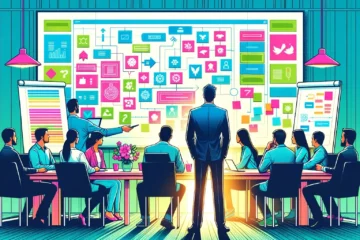
7 Common Mistakes in Software Requirements Specifications










